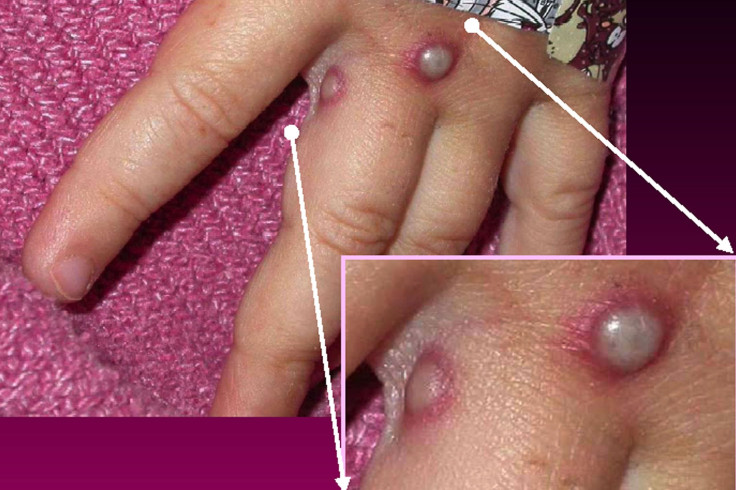What Is Monkeypox? 2 Cases Of Rare Disease Reported In UK
KEY POINTS
- It is believed that one of the patients contracted the infection in Nigeria
- Both patients developed lesions characteristic of monkeypox
- Monkeypox is a virus from the same family as smallpox
Authorities in the United Kingdom have confirmed two cases of monkeypox. One of the patients was someone who worked in Nigeria and the other was a family member.
The first patient arrived in the U.K. on May 8 and began quarantining with family because of the COVID-19 pandemic, the World Health Organization (WHO) stated in a news release. Two days later, on May 10, the patient developed a rash that started on the face.
The patient remained self-isolated for "a further 10 days" and was admitted to a referral hospital on May 23. Samples of skin lesions were sent to Public Health England Rare and Important Pathogens Laboratory on May 24. The test results turned up positive for the west African clade of monkeypox virus.
Another family member with whom the patient quarantined also developed lesions on May 29, and tested positive for the virus on May 31. The family member was quickly isolated. Both of them are now "stable and recovering," the WHO noted.
Prior to arriving in the U.K., the first patient reportedly "lived and worked" in Delta State in Nigeria. The country has recorded quite a number of monkeypox cases since it began its first outbreak in 40 years in 2017. From 2017 to 2019, there were 183 confirmed monkeypox cases and nine deaths from 18 states, including Delta. There have so far been 32 suspected cases in 2021, seven of which have been confirmed.
In 2019 also, U.K. health professionals confirmed a monkeypox case in a patient who reportedly visited Nigeria.
"The risk of potential onward spread in the country is minimized," the WHO said. "The public health risk from this reported event is low in the United Kingdom."
What is monkeypox?
Monkeypox was first discovered in 1958 after two monkey colonies experienced an outbreak of a "pox-like" disease," the Centers for Disease Control and Prevention (CDC) said. The first human monkeypox case was recorded in the Democratic Republic of Congo in 1970. Such cases have since been reported in other western and central African countries.
Disease transmission happens when a person comes in contact with the virus through animals, humans or contaminated items, the CDC noted. It enters the skin through the mucus membrane, respiratory tract or broken skin.
For instance, one could get the virus by getting in contact with an infected animal's bodily fluids or through a bite or scratch. Human to human transmission happens "primarily" through large respiratory droplets or contact with either bodily fluids or lesion materials. It can also be transmitted via "indirect contact with lesion material," for instance through contact with contaminated linen or clothing.
Symptoms of monkeypox tend to begin with muscle aches, fever, headache and exhaustion. Within a few days after developing the fever, the patient will develop a rash that begins on the face and then spreads further.
Its symptoms are rather like those of smallpox, but monkeypox causes the lymph nodes to swell while smallpox does not, the CDC said.
"The illness typically lasts for 2−4 weeks," the CDC said. "In Africa, monkeypox has been shown to cause death in as many as 1 in 10 persons who contract the disease."
So far, there is no "proven, safe treatment" for monkeypox. According to the WHO, the disease is typically "self-limiting," with the symptoms "spontaneously" resolving within 14 to 21 days.

© Copyright IBTimes 2024. All rights reserved.






















